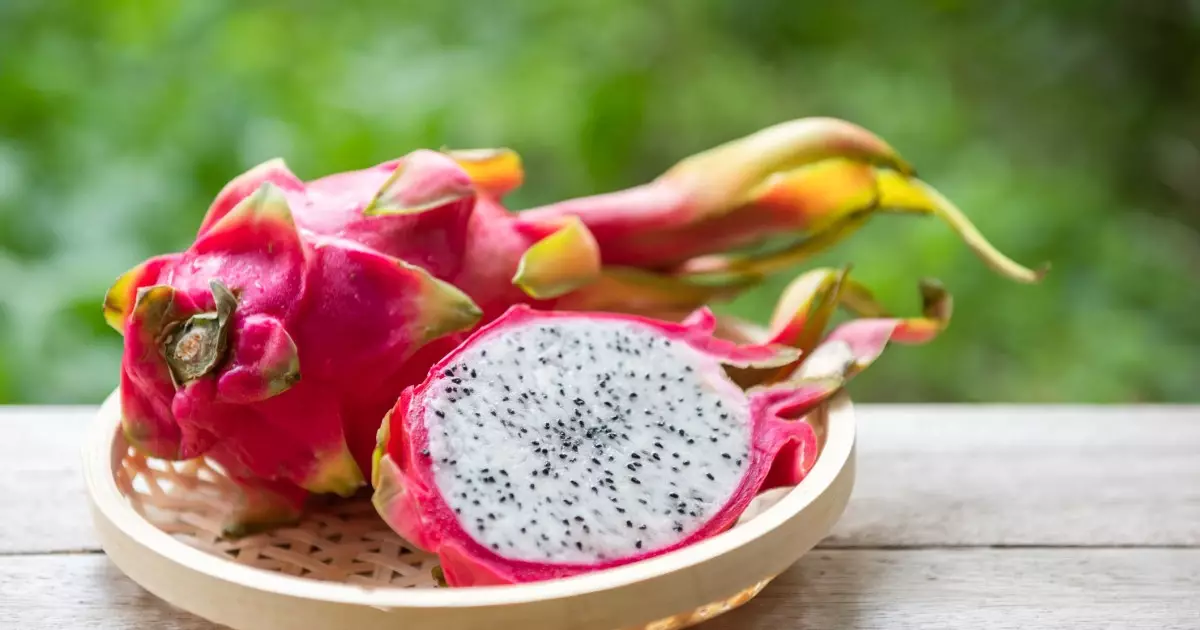Dragon fruit, or pitaya, is not just a feast for the eyes with its vibrant colors and spiky exterior; it also offers a delightful medley of flavors and nutrients that appeal to health-conscious consumers. However, the connection between exotic fruits and our canine companions often raises questions. Can dogs enjoy this uniquely mesmerizing fruit? The good news is that dragon fruit is indeed safe for dogs when prepared correctly. This article explores the benefits and important considerations for pet owners keen on sharing this exciting fruit with their four-legged friends.
Preparation: The Key to Safe Consumption
While it’s wonderful to think of treating your dog to the sweet, succulent flesh of dragon fruit, preparation is essential. The exterior skin of the dragon fruit is tough and should be fully removed before offering any to your pup. Unlike some exotic fruits with harmful seeds or toxins, dragon fruit’s seeds are soft and harmless, allowing you to serve this nutritious treat without worry.
Furthermore, the inner flesh is not only edible but also palatable for dogs, who tend to enjoy its sweet, creamy consistency. This makes dragon fruit an appealing choice for many dogs, particularly those who are curious about new tastes. Nonetheless, it’s wise to introduce any new food to your dog gradually. A small taste at first can help monitor their reaction and avoid any potential digestive discomfort.
Health Benefits for Your Furry Companion
Dragon fruit brings a variety of health benefits that can complement a dog’s diet. Although the vitamin C richness of dragon fruit primarily benefits humans, dogs naturally produce their own vitamin C, negating the need for extra supplementation. However, the presence of dietary fiber is a considerable advantage, helping support healthy digestion. Additionally, dragon fruit contains beneficial minerals such as calcium and iron, contributing to overall well-being.
The presence of Omega-3 fatty acids in dragon fruit plays a crucial role in maintaining a shiny coat and promoting healthy skin, a vital aspect of any dog’s health. Given that dragon fruit is low in calories and fat, it serves as a guilt-free snack that won’t contribute to unnecessary weight gain—a factor that pet owners must carefully manage.
Keep Moderation in Mind
As with many delicious treats, moderation is crucial when feeding dragon fruit to dogs. While it is a healthy addition to their diet, too much of any sweet fruit can trigger gastrointestinal upset in dogs. This could manifest as diarrhea or an upset stomach. Thus, it’s advisable to limit the amount offered—especially in the beginning. By controlling portion sizes, both you and your dog can enjoy the delightful experience of this exotic fruit without any side effects.
Additionally, remember that dragon fruit should be a supplement to a balanced diet rather than a primary source of nutrition for your dog. Dog dietary needs differ significantly from human diets, so any new additions should serve as occasional treats rather than regular staples.
A World of Color: Safety Across Dragon Fruit Varieties
An exciting aspect of dragon fruit is its variety—ranging from pink to yellow skins and distinctively different flesh colors. Fortunately, despite the visual differences, all dragon fruit varieties are safe for dogs. The fruit’s preparation remains the same across types, ensuring a worry-free experience as you explore which might be your dog’s favorite.
When venturing into the world of exotic fruits, it may be tempting to offer your dog any available fruit. However, not all fruits are created equal. Dragon fruit stands out due to its safety and palatability, whereas other exotic fruits may have toxic components that can harm dogs. Thus, dragon fruit shines as a star choice for adventurous pet parents looking to treat their dogs with something special.
Dragon fruit is not just a beautiful tropical treat, but also a nutritious option for dogs when prepared thoughtfully. With proper preparation, moderation, and awareness of health benefits, this exotic fruit can enhance your dog’s snack time while ensuring their safety and health are top priorities.

